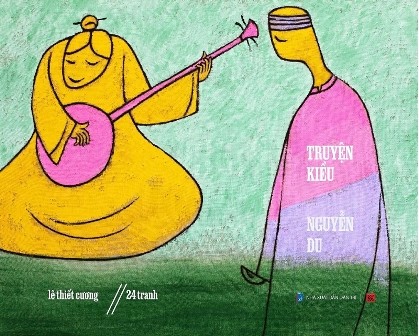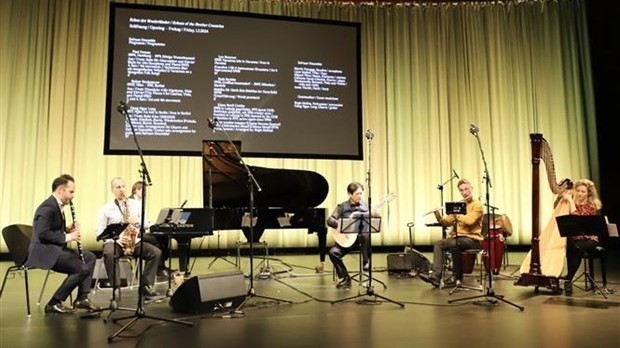The Tale of Kieu comic book makes debut
 |
| The Tale of Kieu comic book makes debut. (Photo: Van hoa the thao). |
This was a special project carried out for many years. Earlier, many painters also had many works on the Tale of Kieu. In his edition, artist Le Thiet Cuong used minimal art to illustrate the masterpiece of the great poem.
The book consists of two parts. It features 24 paintings inspired by verses from the poem, attached with the painter's explanations, helping readers understand more about the artwork. In addition, each painting features short verses by poet Nguyen Thuy Kha with inspiration from the great poem. The second part is the entire content of the poem in accordance with the first edition of the Tale of Kieu printed by Vinh Hung Long in 1925.
During the book launch ceremony, 24 illustrated paintings by artist Le Thiet Cuong were also displayed.
On this occasion, Thang Long Gallery introduced a collection of rare and precious Kieu versions by collector Nguyen Duy Cuong, especially the first “Nom” version illustrated in Viet Nam shortly after Nguyen Du's death.
Originally known as “Doan truong tan thanh” (A New Cry from a Broken Heart), the Tale of Kieu is based on the plot of a Chinese prose novel titled “Kim Van Kieu” written in the 17th century. The poem was originally written in “Nom” script – the ideographic Vietnamese script that was widely used between the 15th-19th centuries.
Depicting the arduous life of Thuy Kieu, a beautiful and talented young woman who had to sell herself to save her father from prison and was forced to become a prostitute, Nguyen Du overcame staunch social prejudice to praise the beauty and virtue of Thuy Kieu, as well as her talents and courage.
The work was translated into many languages, including English, French, Chinese, Polish, Russian, Arabic, and Romanian, and transformed into many art forms such as fine art, music, theatre, Quan ho singing, puppetry, and cinema.












